Allison Bruning's Blog, page 37
July 12, 2013
It's Kind of Complicated: Meet Elsa Garrett #interview #MSH #Aspergers
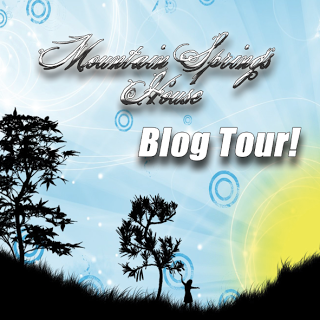
This week on the #MSH blog tour I was asked to interview one of my characters. I decided to introduce you to the main character of my next novel, Elsa Garrett. Elsa, book one of The Secret Heritage series, will be released on August 14, 2013 through Mountain Springs House.
Elsa Garrett is a sixteen-year-old young woman from Marion County, Ohio who is madly in love with her eighteen-year-old boyfriend, Franklin Thaddeus Raymond. Franklin is the eldest son of a factory owner and has low functioning Aspergers Syndrome. Aspergers Syndrome was first diagnosed in 1944 by Austrian pediatrician Hans Asperger who called the mental disorder, autistic psychopath. In Elsa's day anyone with Aspergers was usually placed in the care of an asylum but not in the case of Franklin. Franklin's parents strive to provide as much as a normal life for their son as possible.
Before I interview Elsa we need to step back to 1905 Marion, Ohio since this is the year and place where she lives. Elsa and Franklin live during a very interesting time in American history, The Progressive Era.
Allison: Hello Elsa. Thank you for taking the time to speak with me this morning.
Elsa: You're welcome.
Allison: This is quite a lovely farmhouse. Have you always lived here?
Elsa: No, this two story home belongs to my eldest brother, Henry and his wife, Portia. My family moved here almost two years ago because Henry is sick with Tuberculosis and needs our help with the house and farm.
Allison: How many siblings do you have?
Elsa: Twelve but I have never known all of them.
Allison: Oh? How is that?
Elsa: My ma had a child that drowned before I was born. She was a few years older than Henry. Two of my older siblings died in a house fire when my parents lived in Southern Ohio.
Allison: That's terrible.
Elsa: Yes, my parents won't talk much about it. For them, our family life began when they moved to Marion County, Ohio from Vernon Township, Ohio. The only reason I know about the incident is because Henry told me about it. He and my older sister, Annie, had moved with our parents. My parents had a carriage wreck while moving. Annie was only a few months old. She died in the accident.
Allison: How tragic. What about your other siblings?
Elsa: My other siblings and I were born on our family farm in Marion County. About five years ago, Influenza came to our home. All of my siblings, except Deborah, Henry and Nathan died.
Allison: I am so sorry for your loss, Elsa.
Elsa: Thank you.
A moment of silence passes.
Allison: Do like living with your brother?
Elsa: Yes. Henry's twenty years older than I. He's always been more of a second father to me more than an older brother.
Allison: What is the best thing that has happened to you since your family moved to Henry's house?
Elsa: (she grins). The day I met Franklin. Frank's parents own a farm not that far from Henry's house and had been friends with Portia long before my brother married her. Franklin would come to the house every Friday afternoon and get a list from Henry of supplies he needed from town. The following day, Franklin would deliver whatever was on that list. Well, a few days after my family and I had moved in Franklin arrived to the farm like he always did and Henry introduced him to my family. I was instantly smitten by him.
Allison: And Franklin?
Elsa: He just took the list from Henry, ignored us and went on his way. You could tell he was agitated by something. You see, Franklin doesn't like change nor strangers. It took him a long time to accept that we had moved into Henry's home and to accept that this was the new normal.
Allison: That must have been hard for you.
Elsa: More so for my father. He wanted Henry to get rid of Franklin.
Allison: Why?
Elsa: Pa said Franklin had ill manners and could be dangerous. He couldn't understand why Henry would allow Franklin around Portia and his stepson, Sam.
Allison: How old is Sam?
Elsa: Oh, he's the same age as Nathan. They are only two years younger than me and are the closest of friends. Henry knew Franklin would never harm them. He fought with Pa over the matter for a couple of months. Pa finally relented on the matter when Henry wouldn't dismiss Franklin.
Allison: If Franklin treated your family like that how is that you two were able to court one another?
Elsa: It just happened. It took Franklin a couple of months to accept us but when he did he calmed down. That gave me plenty of time to figure out how I could get his attention. I have always had feelings for him. I saw how routines were important to him. He lives a life where everything is very structured. I decided if I was going to get his attention then I was going to have to create a new routine for him. So one Friday afternoon when he was loading hay into the wagon in the back field I approached him. We carried on a simple conversation then I returned to the house. Every Friday after school, I would make certain to find Franklin at the same time and carry on a conversation with him. Over time our conversations became longer. Then we slowly added Sat to our schedule and so on until it became normal for Franklin to spend time with me.
Allison: Wow, I'm impressed, Elsa. It takes a very understanding person to make that kind of committment.
Elsa: I love him, Allison. I would do anything for him. People don't understand Franklin and his ways. If they did then perhaps they wouldn't be so cruel to him. Franklin trusts me and for Franklin that means alot. I don't care if he doesn't say "I love you," to me or that he can't tell me the things that most girls want to hear. Franklin has a hard time communicating his feelings and that often times gets him in trouble with people. He also cannot keep eye to eye contact so people think he's not listening to you or he's being disrespectful when that's not the case at all. When Franklin speaks, I listen because I know whatever comes out of his mouth took him longer to think about then how long it took him to say it.
Allison: What is the hardest part of your relationship with Franklin?
Elsa: Hmm, that is so hard to answer because he's a great guy despite all his little nuances. I think the hardest part for me is when he has his panic attacks. When he's overstimulated and draws into his mind it's like the man I love has disappeared and all I'm left with is his empty shell.
Allison: That must be scary.
Elsa: It is. Only his father, I and his best friend can draw him out of that. We try to make certain one of us is with him all the time when we know Franklin will have to be in a very stressful situation. Mind you, what is normal for us is not normal for Frank. He can have one of those panic attacks just by a schedule change, someone touching him or being around people he doesn't know.
Allison: What is the best part of your relationship with him?
Elsa: Oh, that's easy. Franklin is the most charming, thoughtful, loving man I have ever known. I feel very blessed that he is in my life. I have a hard life. My parents are poor and I haven't had nice things. Franklin's from the upper middle class and owns a machine shop in Marion. I never thought I would date someone outside of poverty. I don't care about all the nice things he brings me. It's the thought that counts. You see, it's very hard for Franklin to give a gift to someone because he doesn't understand social cues or rules. So for Franklin to give me anything means more to me than the item itself.
Allison: He sounds like a great guy.
Elsa: Oh, he is.
Allison: Thank you for answering my questions.
Elsa: You're very welcome.
Allison: Bye, Elsa.
Elsa: Goodbye
Published on July 12, 2013 07:22
July 7, 2013
#Asperger's Syndrome + #CampNaNoWri = A Great Novel
What does Asperger's Syndrome have to do with Allison's next book?
Published on July 07, 2013 16:16
July 4, 2013
#MSH: Wonderful #Blogs To Visit
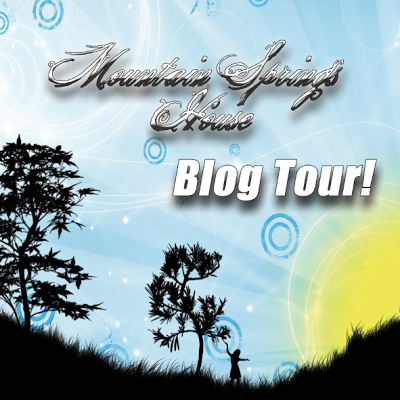
Wonderful Blogs To VisitBy: Aya Walksfar
This week on the Mountain Springs House Blog Tour we were asked to write about what our favorite blogs were to visit and to post it on another's blog. My blog posting can be viewed on Ian George's blog at http://iangeorge.larmani.com/2013/07/mountain-springs-house-blog-tour-week-6.html.
My guest for today is Aya Walksfar. Aya is the author of Dead Men and Cats which can be found on Smashwords and Amazon.
Take it away, Aya.
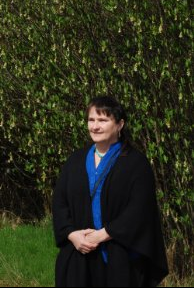
It is great to have this opportunity to share some of the blogs I have found. There are several reasons that play into whether or not I follow a certain blog.
The first is: is the blog in good taste? By that I mean does it have unnecessarily offensive information or rants on it? Does it denigrate other people, races, ethnicity, sexual orientations and so forth?
The second thing I look for is does the blog present information I can use, entertainment to help me relax or in some way broaden my life? I like people who inspire, who do good deeds, who praise others for good deeds. One of my favorite Facebook pages is Real Men are Kind to Animals.
There are a number of blogs I follow that I discovered through my publisher, Mountain Springs House, both informational to help me improve my work and entertaining as I read work by fellow authors.
One of the blogs I follow, and have followed ever since I tripped over it, is Best Sellers Lab. Jonathan Gunson is invariably upbeat and freely shares helpful information. There are several inspirational blogs that encourage me, such as the Real Woman Empowerment Project and My Rays of Light. Although their belief systems may differ from my own, they encourage and uplift others. Really helpful when I’m in a funk!
Ruby Standing Deer, a wonderful writer who approaches the ancient Native American culture in a sensitive and spiritual manner, has a blog that is informational, entertaining and inspiring. Of course, she is not the only author I follow as a fan.
There are so many blogs that I find interesting, inspiring and helpful that I could nearly fill a book with them!
On my own blog, I strive to emulate these wonderful people. I want my blog to be helpful, entertaining and inspiring. Consequently, I post articles not only about writing, grammar, punctuation and word usage, but also about homicide procedure, where I get the colors I use for my character’s hair, how I find a character’s name and other writerly tidbits.
Frequently, I post “interviews” with my characters, excerpts from my work, and short stories to give back to the folks who visit me. It’s simply a way of saying thank you to each one of them for taking time from their busy lives to stop by.
And lastly, I try to keep my blog upbeat. There is enough gloom and doom in the world without me adding to it. That isn’t to say I’m doing the Pollyanna. I am a realist who writes of murder, mayhem, betrayal, death, and awful secrets. With a dose of sex thrown in when it is appropriate.
My ultimate goal is to encourage my readers to come on over, sit down on that comfy recliner, sip a cup of fragrant coffee and chat with me. Let’s talk about books, and stories, and how these alternate realities come to be. Tell me what you liked about my last book or short story, what you wished had been different, whether or not it made you cry, and if you sighed as you turned the last page.
My readers are important to me. They share a part of my life in a unique way. I am always grateful when they write to me, when they leave comments, when they share a part of their lives with me. So come on down. Let yourself in, if I’m not around, make yourself at home. It’s so great you’re here!
http://www.ayawalksfar.com
http://www.mountainspringpublishing.com
http://www.myraysoflight.wordpress.com
http://www.therwep.wordpress.com
http://www.wisewoman2012.wordpress.com
http://www.jumbledwriter.com/blog/
http://www.bestsellerlabs.com
http://www.rubystandingdeer.com
Published on July 04, 2013 06:02
Happy 4th, #America! Old Glory, A #Patriotic Poem

Two hundred and thirty seven years ago our forefathers, risking their own lives, created a great nation. In honor of America's Independence I wanted to share with you a patriotic poem that I wrote for my book, Reflections: Poems and Essays.
Old Glory By: Allison Bruning Oh say can you see…The beauty of the red, white, and blueShe waves proudly over the landAnnouncing to allAmerica has withstoodWhen no one said she would.
By the dawn’s early light…Though tattered and tornOld Glory waves in triumphA symbol of freedomBattered and bruisedOur soldiers cry our victory!
‘Cause the flag still stands for freedom…Those fireworks above her proclaimBursting with colorLike bombs lit in the nightRecalling the battles foughtThe lives lostAnd the freedoms our soldiers protect.
I’m proud to be an American.....Where my forefathers sacrificed allWhen I think of my patriotWords cannot express my heartfelt gratitudeWhat fears he must have had to know he faced an impossible taskIn order that I and future generations would have a better lifeSo let those fireworks burstLet Old Glory flySing the songs and never forget
My country, 'tis of Thee,Sweet Land of Liberty
I hope you have a wonderful 4th of July. Be proud of your country and enjoy celebrating her birthday.
Published on July 04, 2013 05:16
July 2, 2013
Poverty Point: An Unusal Yet Influential #Ancient Culture #Archeaology #Louisiana #NativeAmerican
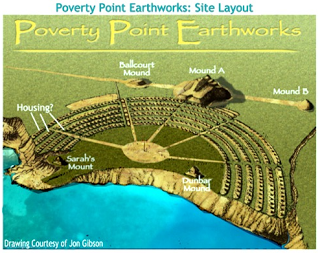 The First Moundbuilders:
Poverty Point pt.2
Considered one of the most unusual archaeological sites in North America, Louisiana's Poverty Point Site is a very important site to consider when studying the Moundbuilding cultures.
The First Moundbuilders:
Poverty Point pt.2
Considered one of the most unusual archaeological sites in North America, Louisiana's Poverty Point Site is a very important site to consider when studying the Moundbuilding cultures.Last time we visited upon the Poverty Point site I introduced you to their mound system and how the Late Archaic people may have built the site. You can see a map of their site on the left hand side. Poverty Point was an important cultural and governmental center for the Poverty Point culture. What sets this site apart as a distinctively unique and interesting for archaeologists who study Late Archaic sites is that fact that the site even exists. During the Late Archaic period all the Native American bands who lived north of Mexico were nomadic hunter-gatherers. It was once believed these groups were not capable of building large settlements because they were always on the move. It is generally agricultural groups that build large, complex settlements such as Watson Break yet this idea is being challenged. Do we have it all wrong? Were the first Native American groups building large settlements only we have no idea they have done so because years of erosion and farming have destroyed the evidence or is Poverty Point a site that stood out challenging the rest of the hunter-gathering groups to change?
Poverty Point and the Caddo
The Poverty Point site was known to historic Native American groups and was considered sacred by the Caddo Nation. The Caddo Nation is a group of advanced Native Americans that had settled in East Texas along the Red River. The loose knit confederacy consisted of a dozen tribes. The Caddo Nation culture began around 800AD during the Late Woodlands and is considered one of the Great Mississippian cultures.
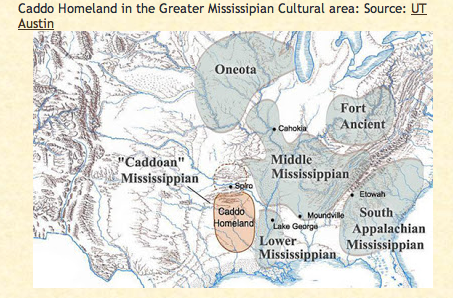
The Caddo Homeland is located south of the Fort Ancient culture. Keep that Fort Ancient culture in the back of your mind. We will be talking about them in another series as the Shawnee people believe the Fort Ancient culture are their ancestors.
According to Texas Beyond History, "Studies of the Caddoan languages suggest that ancestors of the Caddo and the ancestors of the Plains Caddoans (Wichita, Kichai, Pawnee, and Arikira) split from a common ancestor (ancestral group) in the distant past, at least 3,000 years ago and probably even earlier. The Caddo cultural tradition as recognized now by archeologists begins about 1200 years ago (A.D. 800)." 12,000-13,500 years ago very mobile hunter-gather peoples inhabited the area that became the Caddo Homeland. You can learn more about Caddo archaeological sites by visiting Texas Beyond History's Caddo Ancestors
The earliest humans to visit the Poverty Point site after it was abandoned was a 12th century Caddo Medicine Man who was buried with artifacts such as two red stone beads, a slate pendant and a hematite plummet from the Poverty Point site. His grave was located at Mounds Plantation, a prehistoric Caddo village located 40 miles west of the Poverty Point site.
Poverty Point and Archaeology
The Poverty Point site was first discovered in the 1830's by Jacob Walter. Jacob Walter had written about the site in his diary after he came across it while searching for lead ore. During the Civil War parts of the site's mounds were used to build trenches. Poverty Point was brought to public attention when archaeologist and former Confederate officer, Samuel Lockett, published an account about the site in 1873. He was a prolific creative artist whose writings caught the attention of many people during his lifetime.
The first archaeological investigation was completed by Clarence Bloomfield Moore from 1911 -1912. He published the first archaeological survey of the site in 1913 simply describing the site as containing six mounds. It was later investigated further by Gerard Fowke of the Smithsonian Institution in 1926, by Clarence H. Webb in 1935, and by Michael Beckman in 1946.
From 1952 to 1953, archaeologists Robert Neitzel and James A. Ford conducted aeriel surveys of Poverty Point's geometric configuration of the concentric rings. The geometric configuration had not been previously known about because it was invisible from the ground. The aerial survey not only revealed the geometric configuration but also that part of the mounds Moore had discovered were part of the ridge system. The survey also disproved the long held belief that the six rings had been natural created. In 1956, James A. Ford published his findings in his publication, Poverty Point, a Late Archaic Site in Louisiana. Jon L. Gibson of the University of Southwestern Louisiana published Poverty Point on behalf of the Louisiana Archaeological Survey and Antiquities Commission. The second edition was released in May of 1996. You can read it here: http://www.crt.state.la.us/archaeology/virtualbooks/poverpoi/popo.htm
Poverty Point was extensively mapped in 1999-2000 by archaeologist Tristram Kidder, who has continued to lead archaeological field schools and excavations on the site throughout the 21st century.
Published on July 02, 2013 08:40
June 30, 2013
50% off #Book #Sale on #Smashwords
Published on June 30, 2013 14:23
June 28, 2013
Dreaming and building my career foward after #graduation.
Allison's Weekly Vlog
I graduated from Full Sail University.
Now what?
Published on June 28, 2013 12:36
June 27, 2013
The First #American #Moundbuilders: Poverty Point
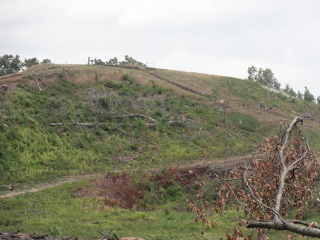 Mound at Poverty Point
Mound at Poverty PointBy:Michael Homan
@http://www.flickr.com/photos/mhoman/
5885372704/in/set-72157627078168928/ The First Moundbuilders: Poverty Point pt.1
Welcome back. On Tuesday I introduced you to the first mound builders north of Mexico, the Watson Break Culture of Louisiana. Today we're going to take a look at another early mound complex located in Louisiana, Poverty Point. Poverty Point has been described by the National Historical Landmarks Program as "the largest and most complex Late Archaic earthwork occupation and ceremonial site yet found in North America." The site is being considered as a UNESCO World Heritage Site.
Poverty Point was constructed between 1750 to 1350 BC on top of a bluff overlooking the Mississippi River Delta and the Bayou Macon. Bayou Macon did not exist at the time of Poverty Point's occupation instead a small lake was there that provided raw material, wood and a transportation route to the Mississippi and beyond.
The Poverty Point site is comprised of six rings and six mounds that stretch over 910 acres. The largest mound, The Great Mound, measures 80 feet high. Anthropologist T.R. Kidder, a professor at Washington University in St. Louis, Missouri believes the Poverty Point complex was constructed within 90 days with about 3,000 laborers. His theory contradicts what is generally believed about Archaic man. Kidder stated to Live Science on February 4, 2013, "Given that a band of 25-30 people is considered quite large for most hunter-gatherer communities, it's truly amazing that this ancient society could bring together a group of nearly 10,000 people, find some way to feed them and get this mound built in a matter of months. These results contradict the popular notion that pre-agricultural people were socially, politically, and economically simple and unable to organize themselves into large groups that could build elaborate architecture or engage in so-called complex social behavior."
 The Poverty Point Site
The Poverty Point SiteWikipedia
http://en.wikipedia.org/wiki/File:Lou...
Poverty_Point_-_Karte_(English_version).png
The mounds and rings at Poverty Point were probably higher than they are today. The tops of the mounds and ridges are flat because they have endured 100 years of farming and 3000 years of erosion. There is evidence that the Poverty Point culture had faced erosion of the site during there time as well and did everything they could to prevent it. During the Civil War, soldiers dug into the Great Mound to form trenches and after the war Jonesville residents leveled many of the mounds by building on top of them. In 1931, Louisiana used what remained of the Great Mound to build a ramp to the Black River. There are probably more mounds that have been destroyed throughout the years. The ridges would have stood 10 to 12 feet high but today they are barely noticeable. Lieutenant Governor Jay Dardenne has requested $750,000 in emergency state funding to limit erosion at Poverty Point.
According the researchers, it would have taken at least 300,000 cubic feet of dirt to construct one mound. So how did these Late Archaic move so much dirt without a dump truck? Kidder believes they were able to move that much dirt in short amount of time by using the "bucket brigade system." According to his theory, over 9,000 prehistoric Native Americans passed soil down a line of people using a crude container such as a hide sack, woven basket or wooden platter. That's alot of man power for the Late Archaic period.
The Poverty Point Culture thrived in Louisiana, Mississippi and Arkansas between 1730 to 1350 BC. Unlike the Watson Break site, the Poverty Point site was occupied year long and was a highly sophisticated city. Archaeological evidence shows the site contained anywhere between 600 to 800 huts that housed between 1,200 to 4,000 people. That's alot of people in one settlement for the Late Archaic Period, especially for a hunter-gatherer culture.
Join me Tuesday as we discuss more about the Poverty Point site and culture.
Published on June 27, 2013 06:08
June 25, 2013
Watson Brake challenges prehistoric beliefs. #archaeology #moundbuilder #louisiana
Ohio's Moundbuilders pt. 3Who were the first Moundbuilders?
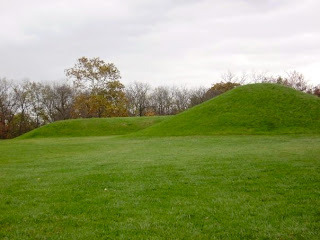 Welcome back to my Ohio's Moundbuilders series. Ohio's Moundbuilders thrived during the Woodland Period. The Woodland Period is an archaeological period occurred between 1000 BC and 1000 AD. It is a specific archaeological culture seen only along the Eastern portion of the United States. Three Woodland Period is further broken into the Early, Middle and Late periods.
Welcome back to my Ohio's Moundbuilders series. Ohio's Moundbuilders thrived during the Woodland Period. The Woodland Period is an archaeological period occurred between 1000 BC and 1000 AD. It is a specific archaeological culture seen only along the Eastern portion of the United States. Three Woodland Period is further broken into the Early, Middle and Late periods.
Archaeologists have further broken down these three groups by cultural groupings since all groups that lived during those times are distinguishable by the types of tools they made.
Last time we discussed Ohio's Moundbuilders I had introduced you to the Adena culture. The Adena Culture lived in small communities throughout Southern Ohio, Kentucky, Indiana, Pennsylvania and West Virginia between 500 BC - 100 AD. They Archaic People lived in Ohio during the beginning of the Woodland Period but their culture was slowly replaced by the Archaic Culture. The Adena Culture were one of the first group of Moundbuilders in Ohio yet they are not responsible for the oldest earthworks north of Mexico.
Watson Break
Watson Break is a complex of eleven mounds ranging in size from 3 to 25 feet tall connected by ridges to form a oval that is 853 feet across located in the Ouachita River floodplain near Monroe in northern Louisiana.
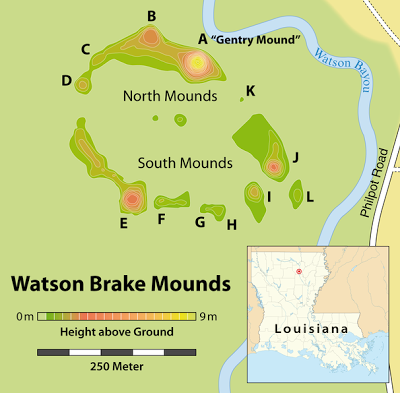 Map of the Watson Brake archaeological site
Map of the Watson Brake archaeological site
http://commons.wikimedia.org/wiki/Fil... have dated the mound complex to 3500 BC, which makes the complex 1,900 years older than Poverty Point. Poverty Point, also located in Louisiana, had been considered the oldest mound complex north of the Mexico. We will talk more about Poverty Point and the influence it may have had upon the Adena culture another time. Watson Break is also older than the Mayans' pyramids of Central America and the Anasazi cliff dwellings of the American Southwest. To put things into prospective, Watson Break was constructed a millennium before the famous King Tut of Egypt was born!
The terrace had been first occupied in 4000 BC by Archaic hunters-fishers-gatherers who had eventually create a settlement there. Watson Brake is an important archaeological site because it challenges what we thought we knew about nomadic hunter-gatherers. Project director Joe W. Saunders of Northeast Louisiana University in Monroe believes the Watson Brake culture probably used the site as a base camp during the summer to fall hunting season to exploit the rivers that have long since dried up. Radiocarbon dating proves the site was used 400 years after its completion in 3500 BC. His theory is supported by the fact that there is no archaeological evidence of permanent habitation of the site.
Archaeological evidence shows the Watson Brake culture had mainly sustain themselves by eating aquatic and river animals including small mammals, fish, shellfish, turtle and waterfowl. They also ate wild turkey, rabbit, pocket gopher and whitetailed deer. They supplemented their diet with hickory nuts and the wild forms of weedy annuals that would later become part of the Eastern Agricultural Complex.
Artifacts recovered from the site show the site was also used for bead production. Drilled chert beads were recovered from the site but they were not associated with any drill bit. Over 30,000 pieces of flaked stone were also recovered including a wide range of tools based on a blade technology. One of the most amazing discoveries was the the recovery of over 150 microdrills. Microdrills are extremely small retouched flaked stone tools with an average width of 2.1 mm. They showed rotary wear when they were examined under 40X magnification.
No human remains were found in or around the mounds. Archaeologists speculate the mounds were used primarily for defensive purposes since they are not located close to the river to be used as a refuge from flooding.
You can learn more about Watson Brake by visiting these websites. http://www.trussel.com/prehist/news171.htmhttp://archaeology.about.com/od/wterms/qt/Watson-Brake.htmhttp://archive.archaeology.org/9801/newsbriefs/mounds.htmlhttp://www.sciencenews.org/pages/pdfs/data/1997/152-12/15212-03.pdf
 Welcome back to my Ohio's Moundbuilders series. Ohio's Moundbuilders thrived during the Woodland Period. The Woodland Period is an archaeological period occurred between 1000 BC and 1000 AD. It is a specific archaeological culture seen only along the Eastern portion of the United States. Three Woodland Period is further broken into the Early, Middle and Late periods.
Welcome back to my Ohio's Moundbuilders series. Ohio's Moundbuilders thrived during the Woodland Period. The Woodland Period is an archaeological period occurred between 1000 BC and 1000 AD. It is a specific archaeological culture seen only along the Eastern portion of the United States. Three Woodland Period is further broken into the Early, Middle and Late periods.Archaeologists have further broken down these three groups by cultural groupings since all groups that lived during those times are distinguishable by the types of tools they made.
Last time we discussed Ohio's Moundbuilders I had introduced you to the Adena culture. The Adena Culture lived in small communities throughout Southern Ohio, Kentucky, Indiana, Pennsylvania and West Virginia between 500 BC - 100 AD. They Archaic People lived in Ohio during the beginning of the Woodland Period but their culture was slowly replaced by the Archaic Culture. The Adena Culture were one of the first group of Moundbuilders in Ohio yet they are not responsible for the oldest earthworks north of Mexico.
Watson Break
Watson Break is a complex of eleven mounds ranging in size from 3 to 25 feet tall connected by ridges to form a oval that is 853 feet across located in the Ouachita River floodplain near Monroe in northern Louisiana.
 Map of the Watson Brake archaeological site
Map of the Watson Brake archaeological sitehttp://commons.wikimedia.org/wiki/Fil... have dated the mound complex to 3500 BC, which makes the complex 1,900 years older than Poverty Point. Poverty Point, also located in Louisiana, had been considered the oldest mound complex north of the Mexico. We will talk more about Poverty Point and the influence it may have had upon the Adena culture another time. Watson Break is also older than the Mayans' pyramids of Central America and the Anasazi cliff dwellings of the American Southwest. To put things into prospective, Watson Break was constructed a millennium before the famous King Tut of Egypt was born!
The terrace had been first occupied in 4000 BC by Archaic hunters-fishers-gatherers who had eventually create a settlement there. Watson Brake is an important archaeological site because it challenges what we thought we knew about nomadic hunter-gatherers. Project director Joe W. Saunders of Northeast Louisiana University in Monroe believes the Watson Brake culture probably used the site as a base camp during the summer to fall hunting season to exploit the rivers that have long since dried up. Radiocarbon dating proves the site was used 400 years after its completion in 3500 BC. His theory is supported by the fact that there is no archaeological evidence of permanent habitation of the site.
Archaeological evidence shows the Watson Brake culture had mainly sustain themselves by eating aquatic and river animals including small mammals, fish, shellfish, turtle and waterfowl. They also ate wild turkey, rabbit, pocket gopher and whitetailed deer. They supplemented their diet with hickory nuts and the wild forms of weedy annuals that would later become part of the Eastern Agricultural Complex.
Artifacts recovered from the site show the site was also used for bead production. Drilled chert beads were recovered from the site but they were not associated with any drill bit. Over 30,000 pieces of flaked stone were also recovered including a wide range of tools based on a blade technology. One of the most amazing discoveries was the the recovery of over 150 microdrills. Microdrills are extremely small retouched flaked stone tools with an average width of 2.1 mm. They showed rotary wear when they were examined under 40X magnification.
No human remains were found in or around the mounds. Archaeologists speculate the mounds were used primarily for defensive purposes since they are not located close to the river to be used as a refuge from flooding.
You can learn more about Watson Brake by visiting these websites. http://www.trussel.com/prehist/news171.htmhttp://archaeology.about.com/od/wterms/qt/Watson-Brake.htmhttp://archive.archaeology.org/9801/newsbriefs/mounds.htmlhttp://www.sciencenews.org/pages/pdfs/data/1997/152-12/15212-03.pdf
Published on June 25, 2013 06:33
June 24, 2013
Allison's Top Ten #Books of All Time
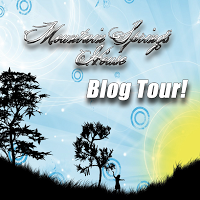 This week on the MSH Blog Tour I was asked to give my top 10 best and worst books I've ever read. I don't really have a list of worst books I've read so I'm going to share with you the best books I've ever read and tell you why I loved them. Here it goes.
This week on the MSH Blog Tour I was asked to give my top 10 best and worst books I've ever read. I don't really have a list of worst books I've read so I'm going to share with you the best books I've ever read and tell you why I loved them. Here it goes.Top Ten Best Books Ever!
(These are in no given order. I just listed my favorite books. )
 1) Mary called Magdalene by Margaret George
1) Mary called Magdalene by Margaret GeorgeWas Mary Magdalene a prostitute, a female divinity figure, a church leader, or all of those? Biblical references to her are tantalizingly brief, but we do know that she was the first person to whom the risen Christ appeared—and the one commissioned to tell others the good news, earning her the ancient honorific, "Apostle to the Apostles." Today, Mary continues to spark controversy, curiosity, and veneration. In a vivid re-creation of Mary Magdalene's life story, Margaret George convincingly captures this renowned woman's voice as she moves from girlhood to womanhood, becomes part of the circle of disciples, and comes to grips with the divine. Grounded in biblical scholarship and secular research, this fascinating historical novel is also, ultimately, "the diary of a soul."
Amazon: http://amzn.to/14linj4
Why I loved it:
What can I say? Who doesn't love Margaret George. I had first been introduced to Margaret George's writing when I read The Memoirs of Cleopatra. I instantly fell in love with her writing style. She made me feel as if I was in ancient Egypt with Queen Cleopatra. I also loved the way she told the story through the eyes of a strong female lead. I wanted to tell my stories the same way she did with a strong believable female lead and a description that left my readers thinking they were in whatever historical setting I brought them.
Mary Called Magdalene was the second book of hers that I had read. Once again the author drew me into her story. The one difference this story had was that it strengthened my faith. Finally, here was a book that told the woman's side of walking with Jesus.
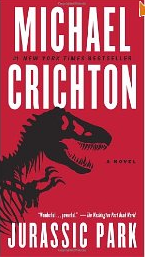 2) Jurassic Park by Michael Crichton
2) Jurassic Park by Michael CrichtonAn astonishing technique for recovering and cloning dinosaur DNA has been discovered. Now humankind’s most thrilling fantasies have come true. Creatures extinct for eons roam Jurassic Park with their awesome presence and profound mystery, and all the world can visit them—for a price.
Until something goes wrong. . . .
In Jurassic Park, Michael Crichton taps all his mesmerizing talent and scientific brilliance to create his most electrifying technothriller.
Amazon: http://amzn.to/1307wyp
Why I loved it:
I was introduced to this book through Girl Scouts when I was in high school. I had been chosen to participate on a wider opportunity and it was required reading. I was going to meet Jack Horner, who was the inspiration for the book and I had to know about it so we could discuss the book with him. I loved this book because I love all things paleontological and anthropological. I will always associate this book with the wonderful experience I had with Jack Horner on his Egg Mountain Site in Montana.
 3) Maiden Flight by Bianca D' Arc
3) Maiden Flight by Bianca D' ArcA chance meeting with a young male dragon seals the fate of one adventurous female poacher. The dragon’s partner, a ruggedly handsome knight named Gareth, takes one look at the shapely woman and decides to do a little poaching of his own.
Sir Gareth both seduces and falls deeply in love with the girl who is not only unafraid of dragons but also possesses a rare gift—she can hear the beasts’ silent speech. He wants her for his mate, but mating with a knight is no simple thing. To accept a knight, a woman must also accept the dragon, the dragon’s mate…and her knight, Lars, too.
She is at first shocked, then intrigued by the lusty life in the Lair. But war is in the making and only the knights and dragons have a chance at ending it before it destroys their land and their lives.
Amazon: http://amzn.to/1aHUPKx
Why I love it:
A friend of mine told me about Bianca's Dragon Knights series. She thought it would be a great read for me because I am into dragons, magic and had started writing a high fantasy erotica book called Passions Awakenings. Wow, all I can say is wow. You have to read this book. I'm addicted to the entire series now.
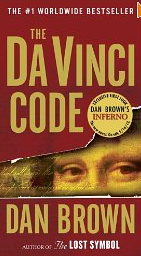 4) The Da Vinci Code by Dan Brown
4) The Da Vinci Code by Dan BrownAs millions of readers around the globe have already discovered, The Da Vinci Code is a reading experience unlike any other. Simultaneously lightning-paced, intelligent, and intricately layered with remarkable research and detail, Dan Brown's novel is a thrilling masterpiece—from its opening pages to its stunning conclusion.
Amazon: http://amzn.to/1309UFA
Why I loved it:
I love a great tale that puts on a spin on something I think I know. The Da Vinci Code challenged me to rethink about things I thought were true. I love a great book that keeps me on my toes.
 5) Imzadi by Peter David
5) Imzadi by Peter DavidYears before they served together on board the "U.S.S. Enterprise." Commander William Riker and ship's counselor Deanna Troi had a tempestuous love affair on her home planet of Betazed. Now, their passions have cooled and they serve together as friends. Yet the memories of that time linger and Riker and Troi remain "Imzadi" -- a powerful Betazoid term that describes the enduring bond they still share.
During delicate negotiations with an aggressive race called the Sindareen. Deanna Troi mysteriously falls ill...and dies. But her death is only the beginning of the adventure for Commander Riker -- an adventure that will take him across time, pit him against one of his closest friends, and force him to choose between Starfleet's strictest rule and the one he calls "Imzadi."
Amazon: http://amzn.to/19lbNQJ
Why I loved it:
Ok so you knew there had to be a Star Trek book in here somewhere, didn't you? LOL! I loved this book because I have always been fascinated by the relationship between Counselor Trio and Commander Riker. They were two of my favorite characters on Star Trek: TNG
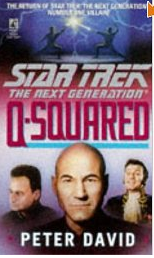 6) Q-Squared by Peter David
6) Q-Squared by Peter DavidIn all of his travels Captain Jean-Luc Picard has never faced an opponent more powerful than Q, a being from another continuum that Picard encountered on his very first mission as Captain of the "Starship Enterprise" TM. In the years since, Q has returned again and again to harass Picard and his crew. Sometimes dangerous, sometimes merely obnoxious, Q has always been mysterious and seemingly all-powerful.
But this time, when Q appears, he comes to Picard for help. Apparently another member of the Q continuum has tapped into an awesome power source that makes this being more powerful than the combined might of the entire Q continuum. This renegade Q is named Trelane, also known as the Squire of Gothos, who Captain Kirk and his crew first encountered over one hundred years ago. Q explains that, armed with this incredible power, Trelane has become unspeakably dangerous.
Now Picard must get involved in an awesome struggle between super beings. And this time the stakes are not just Picard's ship, or the galaxy, or even the universe, this time the stakes are all of creation.
Amazon: http://amzn.to/1aHY4l5
Why I loved it:
I loved the interactions between Captain Picard and Q. What I loved most about this book was the way the author was able to take something that happened in Star Trek and merge it with something that happened generations later. A cause and effect kind of thing. I love it when authors are able to explain why and how something in the past can affect the present.
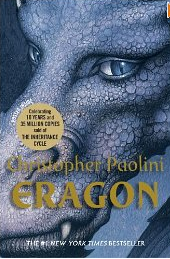 7) Eragon by Christopher Paolini
7) Eragon by Christopher PaoliniFifteen-year-old Eragon believes that he is merely a poor farm boy—until his destiny as a Dragon Rider is revealed. Gifted with only an ancient sword, a loyal dragon, and sage advice from an old storyteller, Eragon is soon swept into a dangerous tapestry of magic, glory, and power. Now his choices could save—or destroy—the Empire.
Amazon: http://amzn.to/1ceJbEO
Why I loved it:
Ah, the book that started my addiction to the Inheritance Cycle. Reading this book was like a drug for me. I couldn't put it down. I have always been fascinated with dragons and the supernatural. The most amazing part of this story was that the author had written this book while he was still in high school. His writing ability was well above his years. I have always admired young people who chase after their dreams. The thing that impressed me the most with this young author was his world building skills. He had developed this world so intricately that anyone reading the book would believe that this world and its people would have existed.
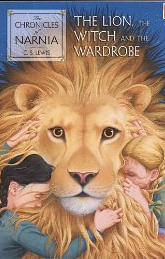 8) The Lion, the Witch and the Wardrobe
8) The Lion, the Witch and the WardrobeThey open a door and enter a world.
Amazon: http://amzn.to/15zfNW7
Why I loved it:
I had fallen in love with the Chronicles of Narnia series as a child. What I love best about the series, as an adult, is how the author is able to tell the story of salvation through the use of fantasy and without saying the name of Jesus. The author is able to reach children and new believers through symbolism. I love that. It opens the door for anyone to ask questions about God and Jesus without causing offense to others.
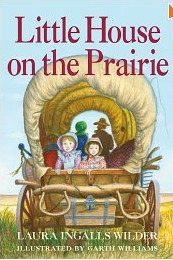 9) Little House on the Prairie
9) Little House on the PrairieWhen Laura Ingalls and her family set out for Kansas, they travel for many days in their covered wagon until they find the perfect place to call home. Pioneer life is sometimes hard, but Laura and her family are busy and happy building their new little house.
Amazon: http://amzn.to/11WhFGu
Why I loved it:
The Little House on the Prairie series are a timeless classic to me because they tell the story of a pioneer family from an author who lived it. Laura wrote her children's books from her childhood experiences as a pioneer. She was able to fictionalize her memoir without losing the flavor of someone who had experienced it.
 10) Twilight by Stephanie Meyers
10) Twilight by Stephanie MeyersBella Swan's move to Forks, a small, perpetually rainy town in Washington, could have been the most boring move she ever made. But once she meets the mysterious and alluring Edward Cullen, Bella's life takes a thrilling and terrifying turn. Up until now, Edward has managed to keep his vampire identity a secret in the small community he lives in, but now nobody is safe, especially Bella, the person Edward holds most dear.
Deeply romantic and extraordinarily suspenseful, Twilight captures the struggle between defying our instincts and satisfying our desires. This is a love story with bite.
Amazon: http://amzn.to/15zidUD
Why I liked it?
Twilight wasn't your typical vampire story. Normally I don't like to read about vampires but I had heard some good reviews about this series and decided to try it out for myself. I really like the way the author was able to bring several different vampire myths together and place her own spin on everything. I was so addicted I had to read the entire series.
Well there you have it. My top ten books. What are your favorite books?
Published on June 24, 2013 10:31




